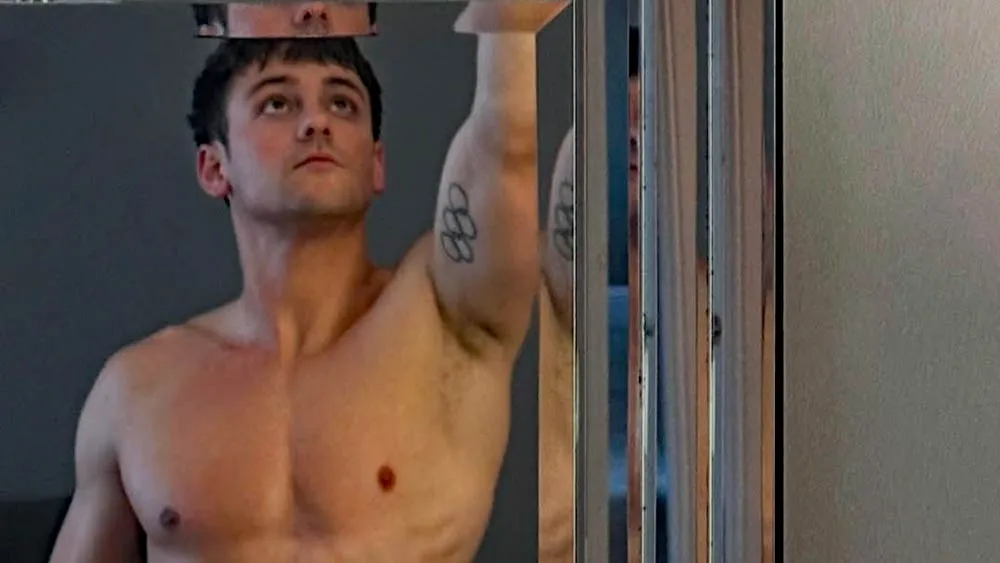February 4, 2012
Men's underwear getting Super Bowl attention
Robert Nesti READ TIME: 4 MIN.
Some things are fashion, and some are necessity. Where do men's undergarments fall? Increasingly, right in the middle.
There's a guaranteed market that needs to replenish supplies no matter what the economy is doing. But innovation in style and technology has made boxers, briefs and undershirts that were once an afterthought into a buzz-worthy category of men's clothes. So much so that H&M is debuting ads for its new undergarment collection by David Beckham during the Super Bowl on Sunday, and Jockey wasted no time signing football star Tim Tebow as its new spokesman.
It makes sense as a growth category, says Marshal Cohen, chief industry analyst with market research firm The NPD Group, but it took the right conditions to get on the fashion industry's radar: streamlined design, comfortable stretch fabrics, the idea that dressing starts at the base layer and that shabby-chic doesn't cut it anymore.
Men, in general, aren't as interested in fleeting trends, he adds. They are, however, willing to buy an "evolved" product if they need to replace an old one. And, Cohen says, as has happened with smartphones or athletic apparel, sometimes men will trade up if they think there's genuine newness.
It's a purchase men are likely to make for themselves, although creating products that appeal to women - either on a business level or a more personal one - is a factor, and that's why you'll see models such as sports figures as top ambassadors, he says.
"Undergarments are relatively inexpensive so everyone can participate," Cohen says. "It's something that's easy for a woman to buy for a guy, something for the guy to buy for himself, there's need. It hits a large swath of demographics."
The total men's underwear and undershirt market for 2011 was up more than 7 percent over the previous year, totaling almost $3.3 billion, NPD numbers show.
H&M must see the potential. The collaboration with Beckham launches with not only boxers, briefs and Ts, but also vests, pajamas and long johns. Beckham said in a statement that it took him and his design team 18 months to come up with just the right initial styles. The plan is for new products each season to expand on these basics.
"It all starts with underwear and you build your wardrobe from there," agrees Patrick Doddy, senior vice president and brand director of A/X Armani Exchange. "It's literally the foundation to your style."
A/X's core, younger consumer - probably an urbanite in his 20s or 30s - isn't self-conscious about purchasing undergarments in the middle of a bustling store, he says. This fashion-savvy customer knows, just like his girlfriend or wife does, that flattering, stylish underwear only enhances his overall look.
One of the brand's now-core styles, the hip brief, was added to the offerings because of the popularity of low-rise pants, and seamless products became a necessary addition when silhouettes became slimmer, Doddy explains.
Boxer-briefs (a hybrid with legs like boxer shorts but a tighter fit like briefs) are the best-selling style for Tommy John, which CEO Tom Patterson sees as a reaction to the shift to flat-front trousers. "Tailored clothing is booming, and it makes sense to have clothes that fit your body. It's taken a little while for underwear to catch up, but it's on its way," he says.
Men like problem-solvers, the T-shirt that will stay tucked in, or boxers that don't ride up when they move from sitting to standing, according to Patterson. His brand's newest twist is a horizontal fly, which eliminates some fabric and, Patterson says, bulkiness.
Doddy says men think about this stuff. They have the same level of vanity as women, and they'll take boosts of confidence wherever they can get it.
Next up will be changes in the undershirt, with 9.4 percent growth last year, and then slimming shapewear, predicts NPD's Cohen.
"A decade ago, all the innovation was coming out of the shape of the bottom - you had the hybrid boxer-brief and younger guys wearing boxers. Now the growth is in undershirts. Guys are wearing them as everyday wear, not just for occasions. Men have recognized they can't do shabby chic and look like they just rolled out of bed," he says. "They are looking for a job, or how to do their job better or how to move ahead, and dressing is part of that."
Robert Nesti can be reached at [email protected].







